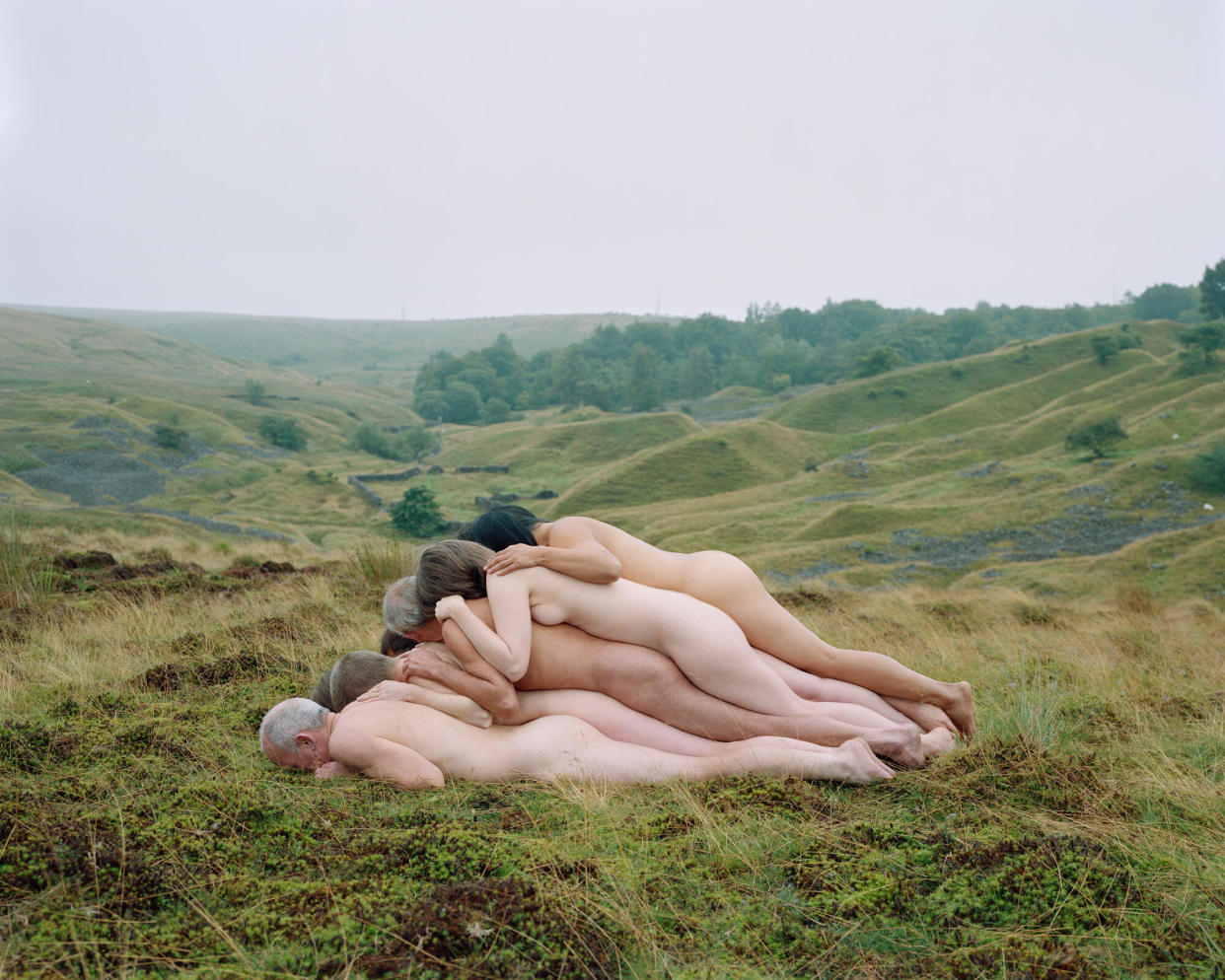Yan Wang Preston review – gloriously confronting art history in the nude

A woman stands majestically on a rocky, icy precipice; she looks out at a vast frosty tract, covered in thick, flawless snow. Her back is turned to us, the mood is contemplative. She surveys her domain, straight-backed, black hair licking the back of her neck.
It’s a photograph by the UK-based Chinese artist Yan Wang Preston. But there is another version of this image, a famous Romantic painting by the German artist Caspar David Friedrich. It is titled Wanderer Above the Sea of Fog, made circa 1817. In that work, a clothed, flame-haired male Rückenfigur (a person seen from behind) stands on a jagged ridge and gazes out over a foggy landscape; the painting is the epitome of 19th century liberalism and romanticism, the lone figure in the rugged landscape contemplating his place in the world.
This was the era of the great expeditionists, colonialism and territory-marking and it is impossible to see the painting now and not feel a sense of the figure’s entitlement over the land below.
Wang Preston’s subversive reworking of Friedrich proposes a different relationship with the land. It hangs in the window of Messums gallery in London, an entry point to her exhibition Three Easier Pieces. In her version of the image, the figure (the artist herself) is naked – buttocks exposed to the freezing temperatures of the South Pennines, where the photograph was made. Wang Preston stood there for as long as she could handle (10 minutes).
Part portrait, part witness to this solitary durational performance (which will be repeated, with other people, throughout the rest of the year) the raw discomfort Wang Preston felt in standing naked in snow, she has said, is akin to what she experiences as a Chinese woman encountering the exoticised female nudes in canonical western paintings. Rather than the promise of domination, Wang Preston’s nude wanderer offers endurance and symbiosis with the land. Following the trajectory of ecofeminists, Wang Preston frames her “exotic” body in the landscape to point to the way both have been degraded and dominated by the male gaze.
Wang Preston's buttocks are exposed to the freezing South Pennines. She managed to stand for 10 minutes
Clever and concise reversals of art history continue inside the exhibition, where Wang Preston does a lot in a few large, lush photographic reconstructions. There is a supersize homage to Zhang Huan’s 1995 work To Add One Metre to an Anonymous Mountain, in which 10 young Chinese artists lay naked on top of each other in protest. Wang Preston restaged the work in Lancashire in August 2021 – after a year of lockdowns – with local volunteers of all backgrounds. Getting naked in nature together was an act of liberation and solidarity; Wang Preston’s restaging reads as a celebration of diversity and a critique of British society and the bodies it excludes.
In three glorious restagings of Manet’s Olympia, Wang Preston poses nude again as Manet’s model Victorine Meurent playing Olympia, then as Laure, the Black maid who attends her, switching roles with a white male model – only when Wang Preston inhabits the role of Laure, she doesn’t gaze lovingly at Olympia, but stares back at the camera. Presented in contention with one another, the effects of nudity, pose and gaze play with the power dynamics implied in the original image. A third version omits the figures an ellipsis that allows us to understand how the staging and details of this work play into this painterly ideal of modernity that equates the bodies of prostitutes and enslaved people with the luxury, exotic flowers and fabrics that surround them.
Wang Preston has restyled Manet’s bouquets according to Chinese floral traditions to reveal a connection between the history of the peony (the star of Manet’s bouquet, a sought-after and expensive flower in the 19th century) and slavery. The first tree peony was imported from China to Britain in 1789 – shortly before the breadfruit was exported to Jamaica from Tahiti to feed enslaved sugar planation workers. Both projects were managed by the English botanist Joseph Banks – who sourced most of the plants for Kew Gardens.
Related: Here and Now: portraits of British-Chinese identity – in pictures
Preston’s previous works have dealt with the complexities of migration through the literal entanglement of roots – plants that are considered “non-native” but that flourish in spite of their new conditions, and with how colonialism was involved with categorising plant life, deciding what was “wild” or “weed” as part of a project of domination and control. Yet plants, like bodies, do not always obey – they become entwined in natural ecologies, they create hybrids and bloom.
This new body of works is a more direct, confrontational and daring look at this relationship between the land and bodies. Using photography to reconstruct iconic paintings has been done before – but Wang Preston does it with precision, confidence and clarity. This exhibition is also about a woman standing her ground, against the elements, in the face of an environment that is often hostile towards her body. But if history is made in images – it can be remade in images, too.
• Yan Wang Preston: Three Easier Pieces is at Messums London until 25 May

 Yahoo News
Yahoo News 
